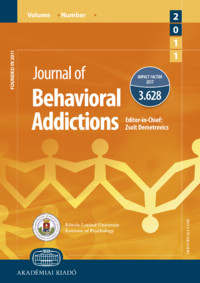The prevalence of loyalty program use and its association with higher risk gambling in Australia
The prevalence of loyalty program use and its association with higher risk gambling in Australia
Author(s): Paul H. Delfabbro, Daniel L. KingSubject(s): Behaviorism
Published by: Akadémiai Kiadó
Summary/Abstract: Background and aims. Loyalty programs are implemented widely by gambling operators to provide customers with additional prizes and benefits for consistent patronage. The aim of this paper was to examine whether loyalty programs were more commonly reported by higher risk gamblers in large population studies conducted in Australia. Method. This paper examines the prevalence of loyalty program use and the association with problem gambling in Australia using data from seven out of 13 public gambling prevalence surveys conducted over the last decade. Results. Evidence drawn from six of these seven studies showed consistent positive association between loyalty card use and higher risk gambling in venue-based gamblers. At least 40% of problem gamblers reported loyalty card use compared with only around 10% of gamblers in general. Discussion. These observations suggest that there is a need to conduct more focused investigations on the utilisation of loyalty programs by higher risk gamblers. Conclusions. It will be important to examine whether loyalty programs encourage or extend gambling sessions, but also how they can be used to facilitate responsible gambling initiatives and inform further behavioural research.
Journal: Journal of Behavioral Addictions
- Issue Year: 9/2020
- Issue No: 4
- Page Range: 1093-1097
- Page Count: 5
- Language: English

